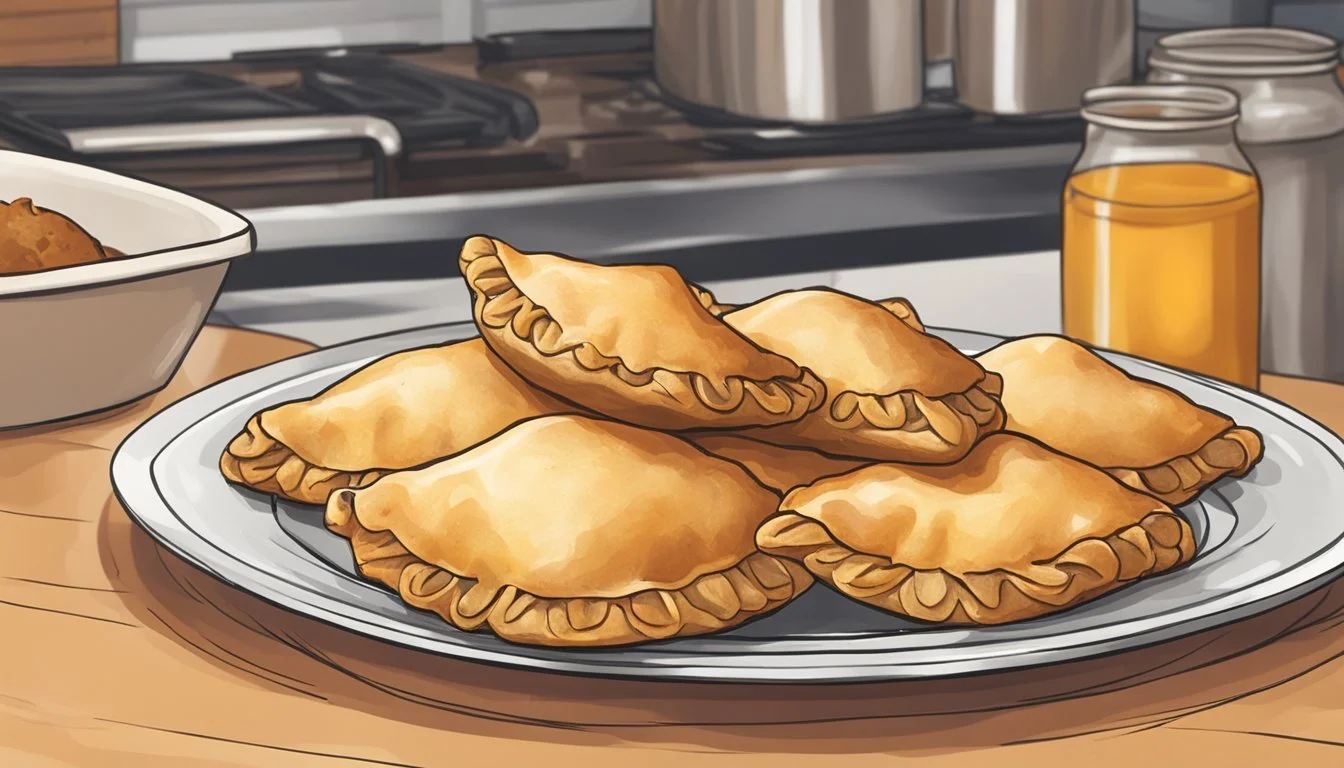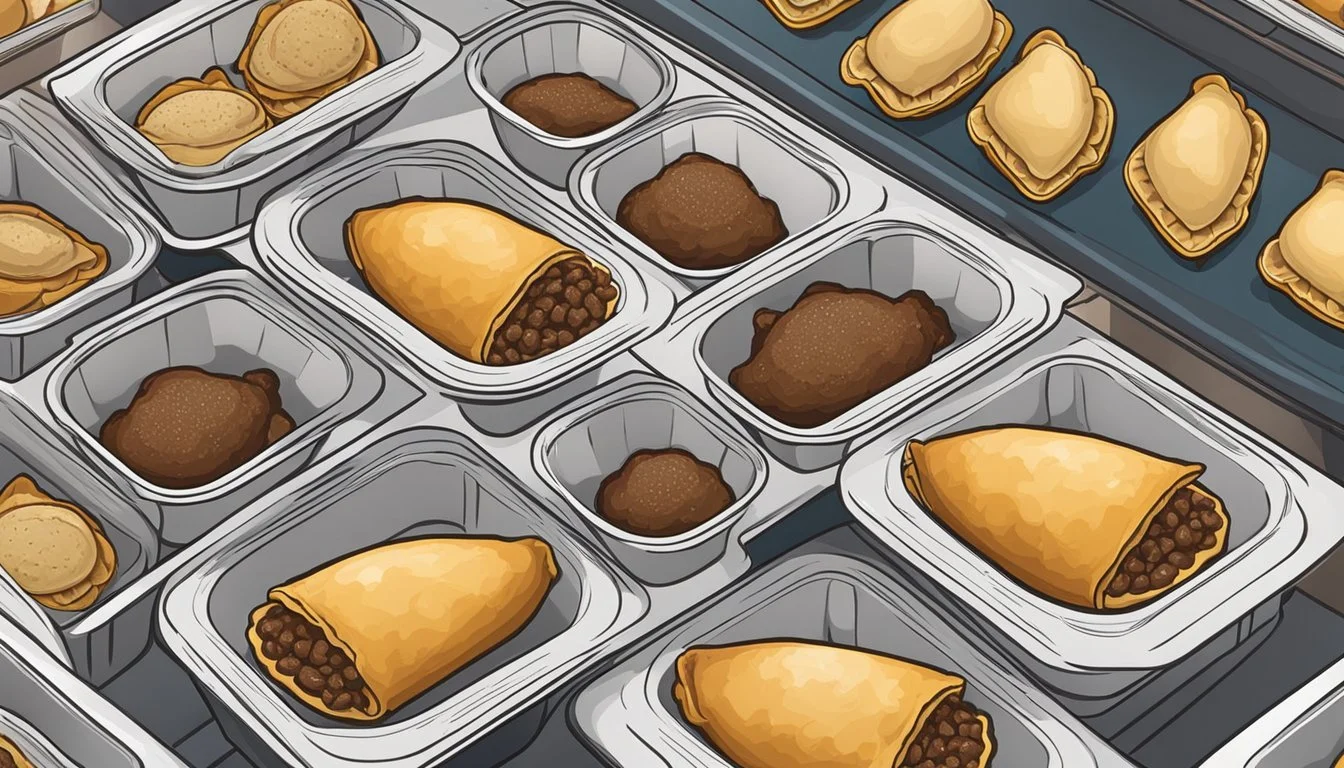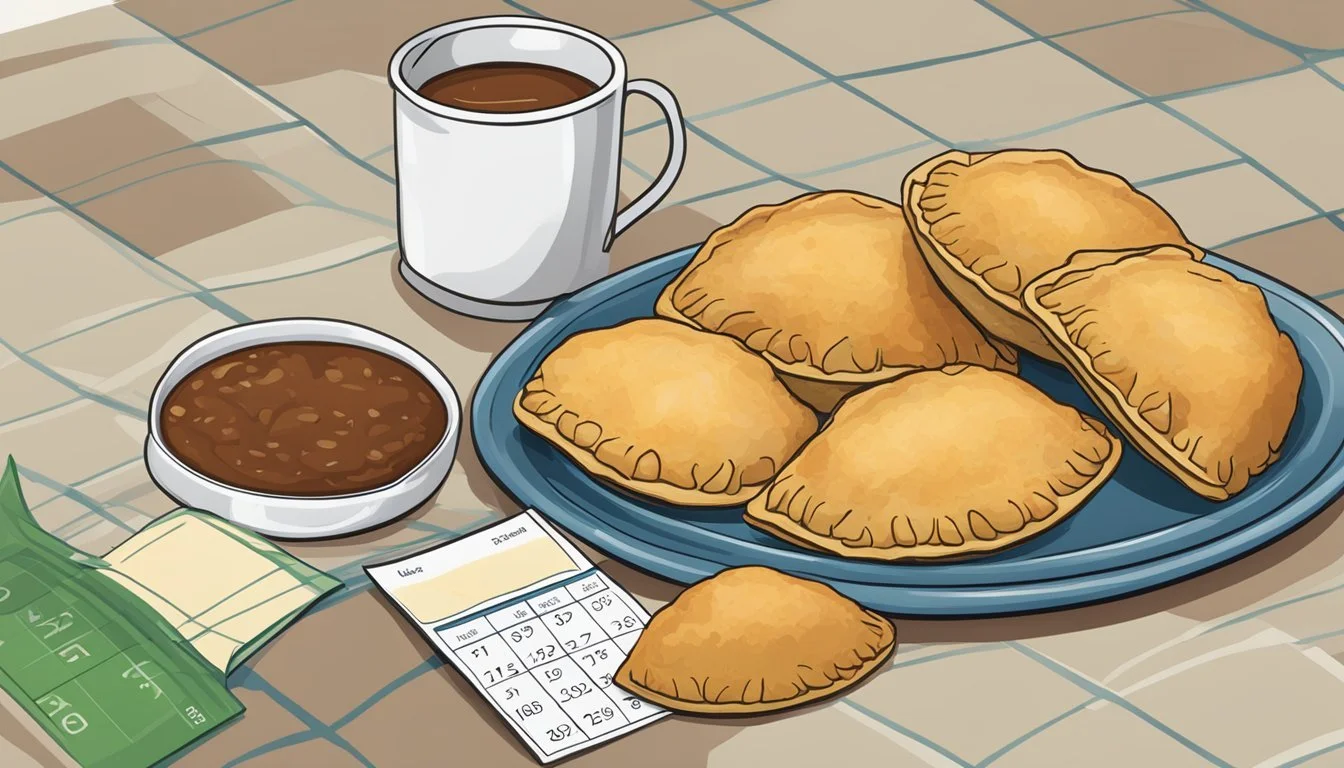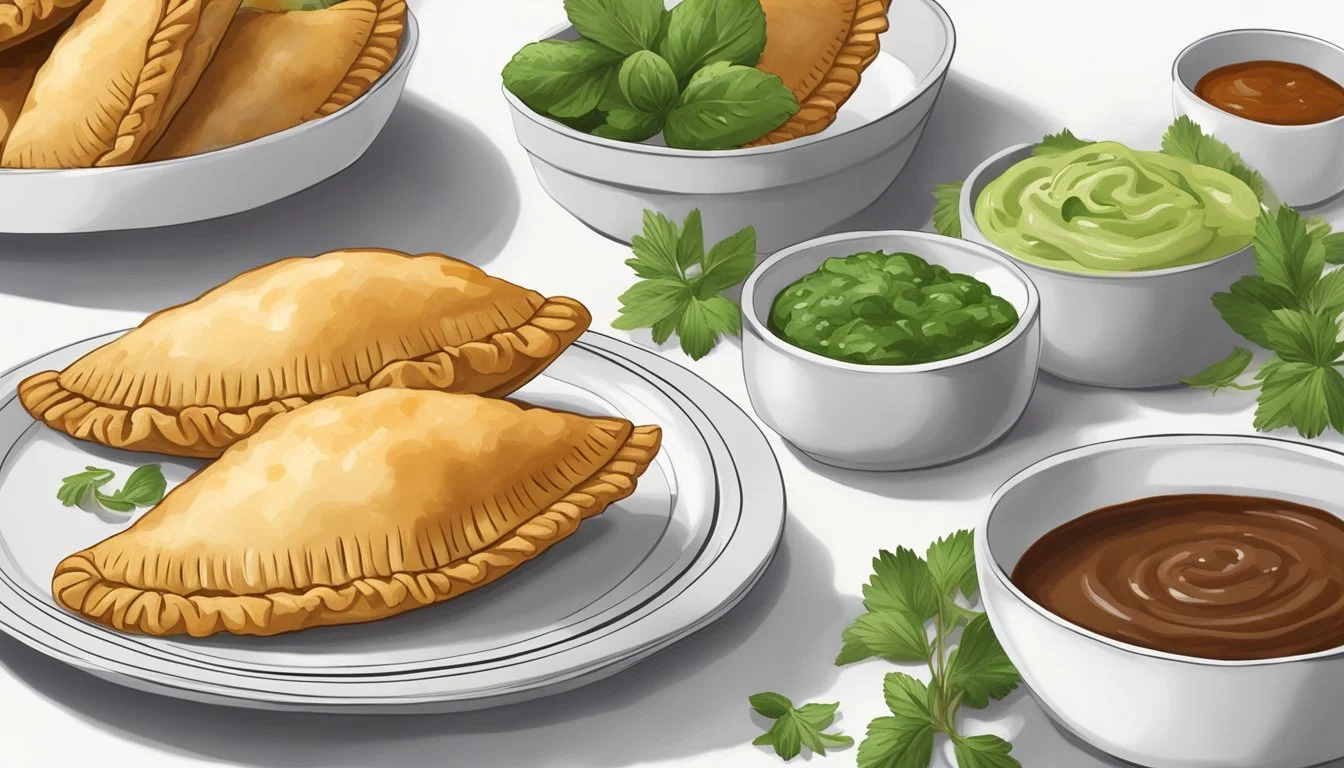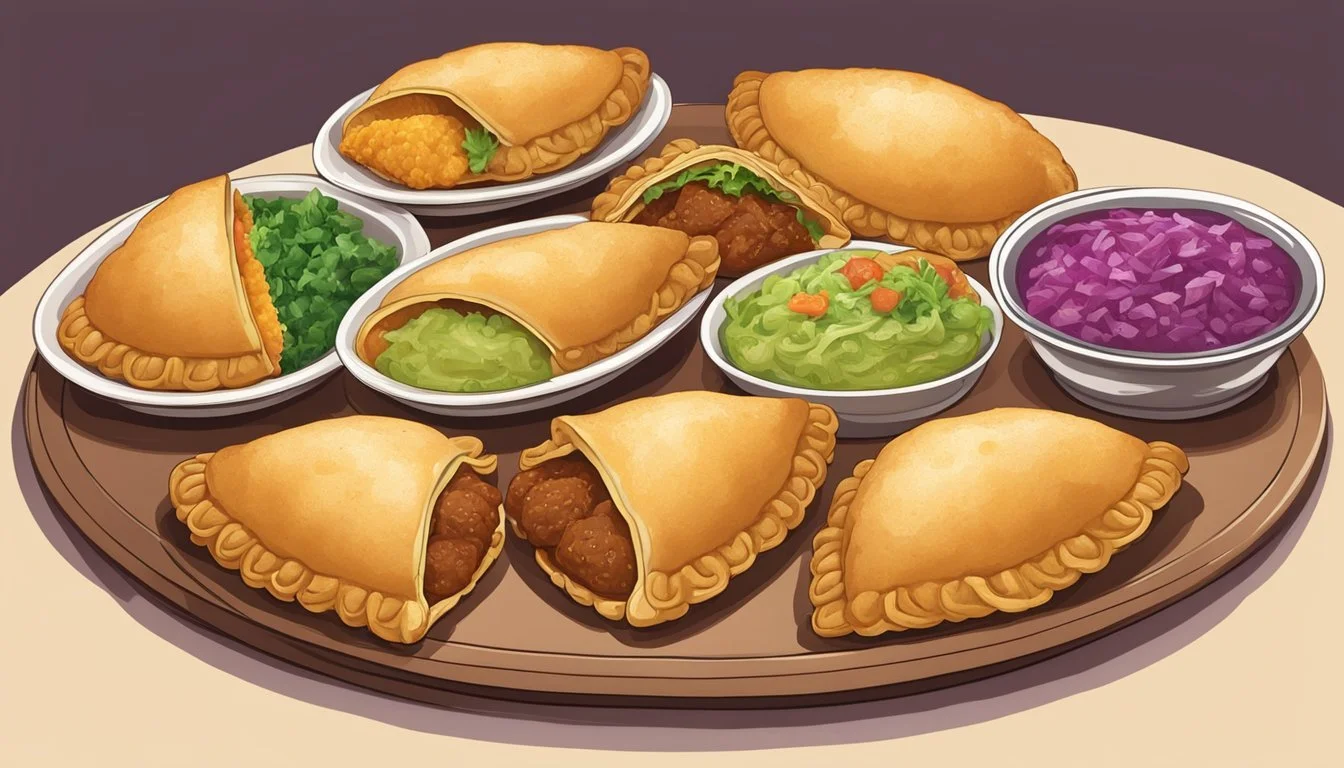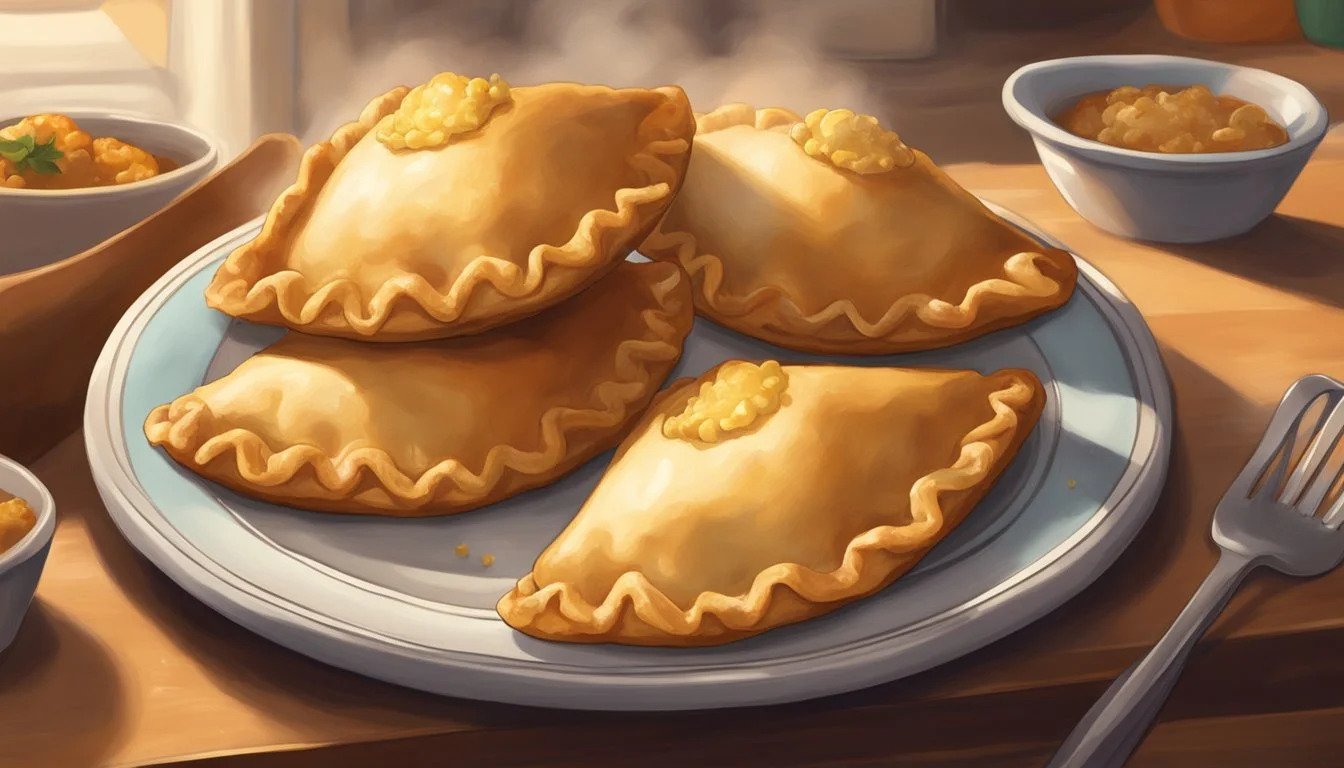How Long Do Beef Empanadas Last?
Storage Tips and Shelf Life
Beef empanadas, with their savory filling and golden, flaky crust, are a delight many can't resist. These delectable pastries can be enjoyed not just fresh out of the oven but also stored for later consumption. In the refrigerator, beef empanadas can last for about 3 to 4 days, maintaining their flavor and texture when stored properly.
When considering longer storage, freezing is an excellent option. By freezing beef empanadas, they can be preserved for up to 3 months, making them an ideal make-ahead meal or snack. It's essential to place them in a single layer to avoid sogginess and maintain their characteristic crispiness.
By understanding the best methods to store beef empanadas, whether refrigerated or frozen, one can enjoy their delightful taste and texture at any time. This knowledge not only helps in reducing food waste but also ensures that the empanadas remain a tasty treat for days or even months after preparation.
What Are Beef Empanadas?
Beef empanadas are savory pastries filled with a spiced beef mixture, often enjoyed as appetizers, snacks, or even main dishes. These Latin American delights boast rich flavors and a diverse cultural heritage.
Ingredients Overview
Beef empanadas start with a simple yet flavorful dough, typically made from flour, salt, melted butter, water, and egg. This dough is rolled out, cut into circles, and filled with a delicious beef mixture.
The filling often includes ground beef, onions, garlic, tomato paste, and a blend of spices such as cumin, salt, and pepper. Some recipes add chorizo, olives, or shredded cheese for extra flavor.
Olive oil is used to sauté the onions and garlic, bringing out their sweetness. The beef is cooked until browned, with the tomato paste added to enhance the dish's richness. Egg wash brushed on the edges helps seal the empanadas and gives a golden finish.
Cultural Significance
Beef empanadas hold a special place in Latin American cuisine, especially in countries like Argentina, Chile, and Mexico. Often enjoyed during festivals and family gatherings, they represent a communal spirit and culinary tradition.
Empanadas can vary significantly across regions. In Argentina, they might feature a juicy filling with olives and hard-boiled eggs, while in Mexico, the seasoning and spice levels can be quite different.
Typically served as finger food, empanadas can be part of a festive spread or a simple meal. They underscore the versatile and flavorful essence of Latin American gastronomy.
Making Beef Empanadas
Making beef empanadas involves preparing the dough, creating a delicious filling, assembling the empanadas, and using various cooking methods like baking, frying, or using an air fryer. Attention to detail ensures each empanada is flavorful and perfectly cooked.
Preparing the Dough
To prepare the empanada dough, start with basic ingredients: 3 cups of all-purpose flour, 1 egg, 2/3 cup of water, and a pinch of salt.
Begin by whisking together the melted butter, water, and egg in a large bowl. Slowly incorporate the flour and salt, mixing until the dough forms. Knead the dough gently until it's smooth, then cover it with plastic wrap and refrigerate for about 30 minutes.
Homemade dough gives empanadas a tender, flaky texture. For convenience, pre-made pie crust can also be used. Unroll the dough and use a round cutter to make 3-inch circles, reserving scraps for re-rolling if needed.
Creating the Filling
For the filling, use 1 pound of ground beef, 1 chopped onion, 2 cloves of minced garlic, and seasonings such as cumin, chili powder, paprika, salt, and pepper.
In a medium skillet, sauté the onion and garlic until softened. Add the ground beef, breaking it up and cooking until browned. Mix in 2 tablespoons of tomato paste and cook for an additional minute.
Stir in seasonings and simmer for about 15 minutes. Optional ingredients like chopped green olives can be added for extra flavor. Once cooked, let the filling cool before assembling the empanadas.
Assembling and Baking
Preheat your oven to 400°F and line a baking sheet with parchment paper. Take the prepared dough circles and place a spoonful of the beef filling in the center of each.
Fold the dough over to create a half-moon shape, sealing the edges with a fork. Brush the tops with an egg wash (1 beaten egg mixed with 1 tablespoon of water) to give them a golden finish. Arrange them on the prepared baking sheet.
Bake for 20-25 minutes until the empanadas are golden brown. Let them cool slightly before serving to enhance flavor and texture.
Alternative Cooking Methods
In addition to baking, empanadas can be fried, cooked in an air fryer, or reheated in a microwave.
For frying, heat oil in a deep skillet and cook empanadas until they are crispy and golden. Air frying offers a healthier alternative; preheat the air fryer to 375°F and cook for about 10-12 minutes.
Microwaving is best for reheating. Place empanadas on a microwave-safe plate and heat for 1-2 minutes until warm, though this may slightly soften the dough.
Storing Beef Empanadas
Proper storage methods are essential for keeping beef empanadas fresh and delicious. Whether you plan to eat them within a few days or want to store them for longer periods, following these tips will help retain their texture and flavor.
Short-Term Storage
For short-term storage, place fresh beef empanadas in the refrigerator. To ensure optimal flavor and texture, use airtight containers. Empanadas can last 3-5 days in the fridge. Arrange them in a single layer to prevent them from becoming soggy. Avoid stacking as this can cause moisture buildup, negatively affecting the texture. It’s best to let the empanadas cool to room temperature before refrigerating to maintain their integrity.
Freezing and Long-Term Storage
Freezing is a great option for long-term storage. Beef empanadas can be frozen for up to 2-3 months. For uncooked empanadas, place them on a baking sheet and freeze until firm. Wrap each empanada individually using plastic wrap to avoid freezer burn. Transfer them to airtight containers or freezer bags. For cooked empanadas, freeze them in a single layer on a tray first, then store in containers. Label and date the containers to keep track of freshness.
Reheating Tips
Proper reheating methods ensure beef empanadas regain their deliciousness. For oven reheating, preheat to 350°F (175°C). Place empanadas on a baking sheet and heat for 15-20 minutes. For a quicker option, use an air fryer: preheat to 350°F (175°C) and cook empanadas for 5-7 minutes. Thaw frozen empanadas in the refrigerator overnight before reheating. Microwaving is an option too, though it might not maintain the crispy texture. For best results, use medium heat and check frequently to avoid sogginess.
By following these steps, you can enjoy delicious beef empanadas, whether freshly made or stored for future meals, while maintaining their taste and quality.
Nutritional Information
Beef empanadas can be enjoyed as an appetizer or a main dish. Knowing their nutritional breakdown is important for making healthier choices and catering to specific dietary needs.
Caloric Content
A single beef empanada typically contains between 250 to 300 calories. This range depends on factors such as size, dough type, and specific ingredients used. For instance, an empanada made with a richer, buttery dough will have more calories compared to one with a leaner dough. Tracking calorie intake is crucial, especially for those monitoring their weight or managing dietary restrictions. This calorie count is in line with similar savory pastries, making beef empanadas a moderate-calorie option.
Understanding Macros
Protein, carbohydrates, and fats make up the primary macronutrients in beef empanadas.
Protein: Each empanada typically offers about 10-15 grams, driven mostly by the beef filling.
Carbohydrates: One empanada usually contains around 20-30 grams of carbohydrates, largely from the dough.
Fats: The fat content can vary from 10-15 grams depending on the type of meat and the amount of oil or butter used in preparation.
Balancing macros helps in maintaining energy levels and satiety.
Dietary Considerations
When considering dietary needs, beef empanadas can be modified to suit various allergies and preferences.
Gluten-Free: Traditional empanadas use wheat flour, which contains gluten. Substituting with gluten-free flour can make them suitable for those with celiac disease.
Dairy-Free: Some recipes use butter or cheese. These can be replaced with dairy-free alternatives for those with lactose intolerance.
Allergies and Sensitivities: Always check the ingredient list for potential allergens like soy or nuts. Customizing the recipe to avoid these allergens can make empanadas accessible to more people.
Understanding these nutritional aspects ensures beef empanadas can fit various eating plans and dietary restrictions, making them a versatile and enjoyable option.
Serving & Presentation
Beef empanadas can be a delightful addition to any meal, whether served as an appetizer, snack, or main dish. The visual appeal and complementary flavors from garnishes and side dishes can elevate the dining experience.
Garnishing and Side Dishes
To enhance the presentation and flavor of beef empanadas, consider garnishing with fresh cilantro, chopped green onions, or sliced jalapeños. These add a pop of color and fresh taste that complements the savory filling.
Chimichurri sauce is a popular choice as well. This herbaceous and garlicky sauce pairs wonderfully with the beef, offering a vibrant contrast in flavors.
Side dishes such as Mexican rice, black beans and rice, or a simple green salad with a tangy vinaigrette provide a balanced meal.
For a more festive touch, serve with salsa verde or strawberry salsa. These options not only enhance the taste but also make the dish visually appealing.
Serving Suggestions
Beef empanadas can be served in various settings depending on the occasion. They make excellent appetizers or snacks at parties, looking striking on a platter with various dipping sauces.
For a more substantial meal, serve them as lunch or dinner. Arrange them neatly on a plate with appropriate side dishes like a corn on the cob or Mexican street corn salad.
Individual servings can be presented with a small dollop of chimichurri sauce on the side, sprinkling the empanadas with a bit of sea salt for an extra touch.
For a make-ahead option, empanadas can be prepped and stored. They retain freshness when stored in airtight containers in the fridge or freezer until ready to be reheated and served.
Variations of Beef Empanadas
Beef empanadas can be incredibly versatile, offering numerous ways to customize the filling, dough, and flavors. Here are some ideas that can help you experiment with your beef empanada recipes.
Alternative Fillings
Apart from the traditional ground beef, there are several alternative fillings to explore. Chicken, pork, and turkey make great substitutes and can be seasoned similarly to beef. For a vegetarian option, combinations of vegetables such as bell pepper, peas, and cheese can provide a tasty and satisfying filling. Adding green olives can also enhance the flavor profile, giving it a unique and savory twist.
Chicken: Season with cumin and chili powder.
Pork: Add a bit of sweetness with diced apples.
Turkey: Compliment with cranberries and sage.
Different Dough Types
The type of dough used can significantly impact the texture and taste of empanadas. Traditional empanada dough is often made at home using flour, butter, and cold water. However, store-bought dough, such as puff pastry, can also be a quick and convenient alternative. While homemade dough generally provides a more authentic and flaky result, store-bought versions can save time and effort.
Puff Pastry: Offers a light, crispy texture.
Homemade Dough: Tends to be thicker and more absorbent.
Store-Bought Dough: Convenient for quick preparations.
Spice and Flavor Adjustments
Spices and seasonings can be adjusted to suit different tastes and intensify the flavor of the empanadas. Common spices like cumin, chili powder, black pepper, and kosher salt are staple additions. To elevate the taste, try incorporating dried oregano, smoked paprika, or even a hint of cinnamon. These adjustments can make each batch unique and tailored to your personal preferences.
Cumin and Chili Powder: Traditional choices for depth.
Dried Oregano: Adds a herbaceous quality.
Cinnamon: Introduces a subtle warmth.
These variations make it easy to adapt beef empanadas to different tastes and dietary preferences while keeping the cooking process enjoyable and creative.
Final Tips and Tricks
To ensure your beef empanadas turn out delicious and consistent, it's important to focus on an efficient assembly process, maintaining uniformity, and avoiding common issues during preparation.
Efficient Assembly Line
Creating an efficient assembly line can significantly speed up the preparation of beef empanadas. Set up separate stations for rolling, filling, and sealing. Arrange tools such as rolling pins, molds, and crimpers within easy reach.
Consider using pre-made dough to save time. Pre-cook the beef filling and let it cool before use to simplify this stage. Use spoons or small scoops to portion the filling evenly, which helps prevent overfilling and ensures each empanada cooks properly.
Organize ingredients and tasks to keep the work surface clean and reduce cross-contamination. This can streamline the process and ensure that every empanada is consistent in size and shape.
Ensuring Consistency
Consistency in size, shape, and filling quantity is essential for evenly cooked empanadas. Use a dough mold or cutter to achieve uniform rounds of dough. Aim for a thickness of about 1/8 inch to ensure the dough cooks evenly without becoming too dry or soggy.
Measure filling amounts accurately to avoid overfilling. Approximately 1-2 tablespoons of filling per empanada is ideal. Crimp the edges firmly to seal the empanadas, using a fork or a special crimping tool.
This prevents the filling from leaking out during baking or frying. Maintain consistent oven temperatures (around 375°F to 400°F) and baking times (20-25 minutes) for a golden, crisp exterior.
Avoiding Common Mistakes
Avoiding common mistakes is key to perfecting beef empanadas. Overfilling can cause the empanadas to burst during cooking, so stick to recommended filling amounts. Insufficient crimping and sealing can lead to leakage, so ensure edges are tightly secured.
Too much moisture in the filling can make the dough soggy. Cook the beef thoroughly to reduce excess liquid. Use parchment paper to prevent sticking and to make cleanup easier.
Monitor the cooking temperature closely. Over-baking can dry out the empanadas, while underbaking leaves the dough undercooked. Always preheat the oven or oil to the correct temperature before cooking. Attention to these details will help achieve tasty, well-cooked beef empanadas.
Frequently Asked Questions
How should beef empanadas be stored?
Beef empanadas are best stored in airtight containers. For optimal texture and flavor, place them in a single layer to avoid sogginess.
What is the shelf life of freshly prepared beef empanadas?
Fresh empanadas can last 3-5 days in the refrigerator. In the freezer, they can stay good for up to 3 months.
Can beef empanadas be frozen?
Yes, uncooked beef empanadas can be frozen. Place them on a baking sheet until firm, then transfer to an airtight container or freezer bag. They can be stored for up to 2 months.
How do you reheat frozen beef empanadas?
Thaw frozen beef empanadas in the refrigerator overnight. Alternatively, microwave them on a low setting until warm.
What are the nutrition facts for beef empanadas?
Nutritional information can vary depending on the recipe. Typically, one beef empanada may contain around 250-300 calories, along with protein and fats.
Can you bake beef empanadas in an oven?
Yes, bake at 400°F for 15-20 minutes until browned and crispy.
What is the best way to reheat beef empanadas?
Wrap each empanada in a slightly damp paper towel and microwave for 20-30 seconds. For large quantities, a slow cooker on a "low" setting can keep them warm for several hours.
What common fillings are used in beef empanadas?
Traditional fillings include ground beef, onions, olives, and hard-boiled eggs. Variations may include spices, raisins, or cheese.

